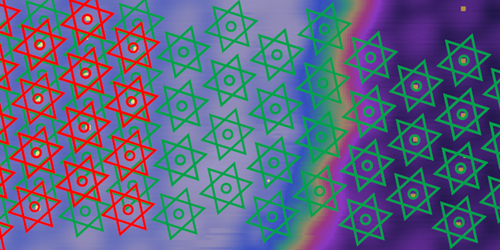A Mott Meter
Mott insulators are not your ordinary insulators. These materials have unfilled orbitals, which would normally make them conductors, but electron-electron interactions prevent current flow. Distinguishing a Mott insulator from an ordinary (trivial) insulator has typically relied on theoretical calculations of the band structure. Now, Han Woong Yeom of Pohang University of Science and Technology, South Korea, and colleagues have developed an experimental method that can reveal an insulator’s true identity [1].
It’s easy to get charged up about Mott insulators, as they are tied to high-temperature superconductors and quantum spin liquids. But identifying Mott insulators is not straightforward. An example is trigonal tantalum sulfide (1T-TaS2), which consists of layers in a “Star of David” lattice structure. For thirty years, 1T-TaS2 was classified as a Mott insulator, based on the assumed presence of unfilled orbitals in each layer. However, recent experiments showed that the layers are stacked as double layers, which could imply that electron sharing fills the orbitals, downgrading 1T-TaS2 to a trivial insulator.
To determine which category of insulator applies, Yeom and colleagues cleaved a 1T-TaS2 crystal, exposing two types of surfaces: one with a complete double layer and one with only half of a double layer. They let potassium atoms adsorb onto both surface types and observed the adsorption pattern with a scanning tunneling microscope. The “complete” surfaces exhibited a less ordered pattern than the “half” surfaces—evidence that a complete double layer offers no unfilled orbital sites where potassium atoms can bind. The team confirmed this interpretation with site-by-site conductivity measurements. The results show that bulk 1T-TaS2 is a trivial insulator, but a single-layer film—if it could be made—would be a Mott insulator.
–Michael Schirber
Michael Schirber is a Corresponding Editor for Physics Magazine based in Lyon, France.
References
- J. Lee et al., “Distinguishing a Mott insulator from a trivial insulator with atomic adsorbates,” Phys. Rev. Lett. 126, 196405 (2021).





